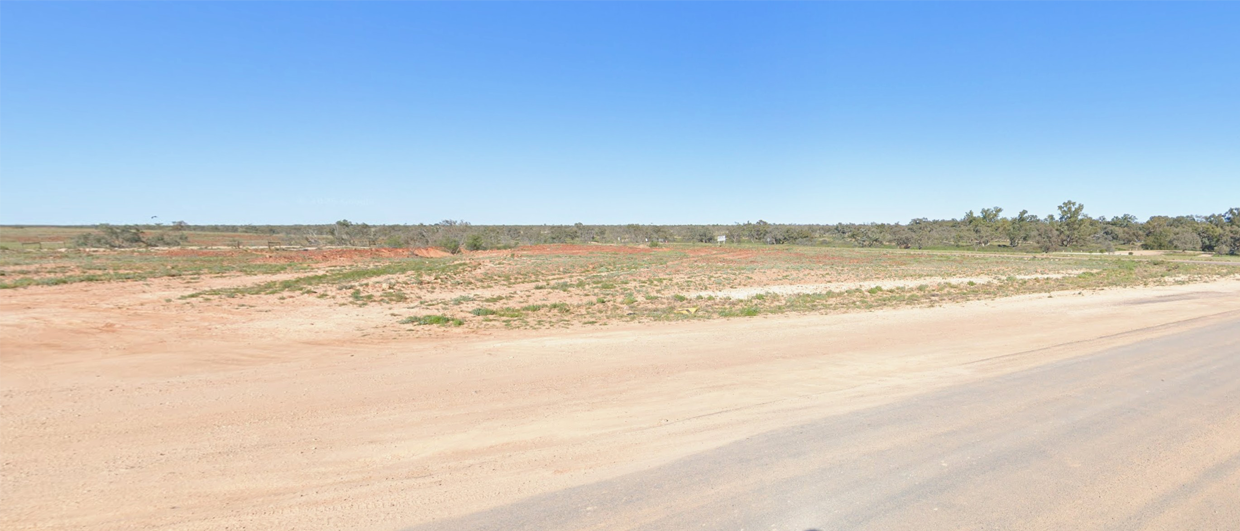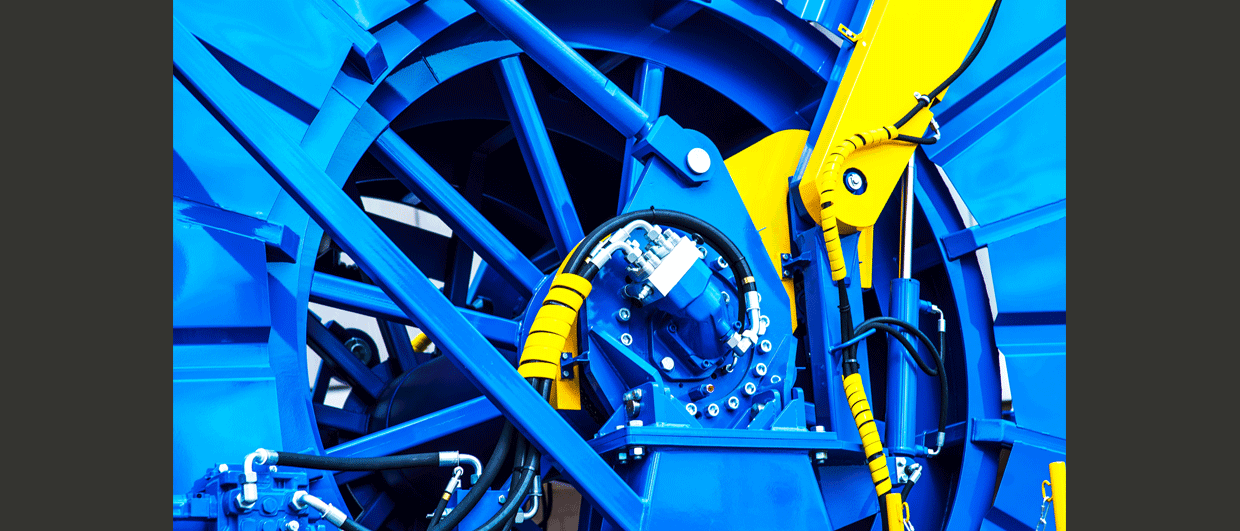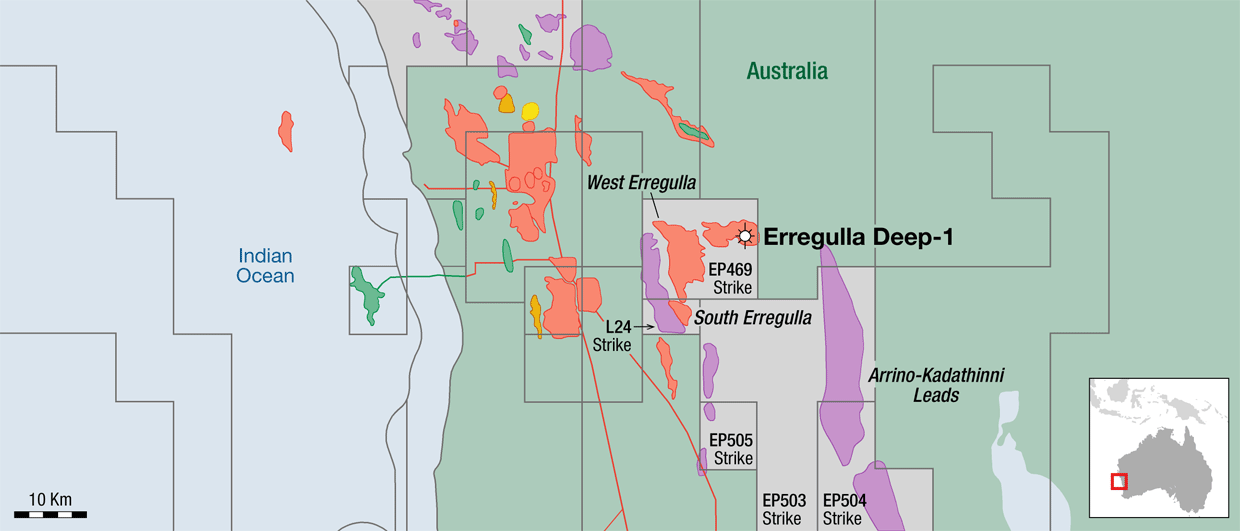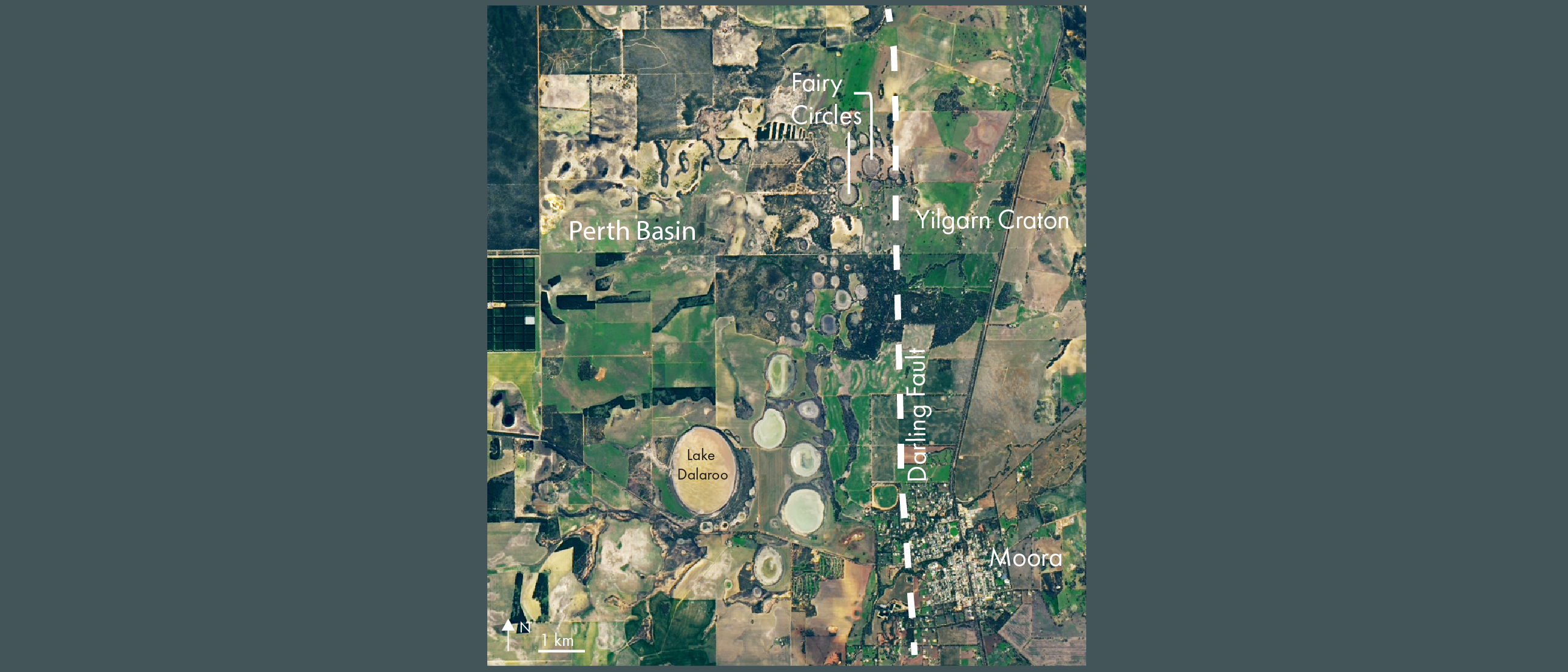The ENE trending Rankin High is dissected by a series of sub-parallel Lower to Middle Jurassic basins, of which the Searipple Graben to the west of NW Rankin is an example. An early exploration well drilled into the Graben in 1972 – North Rankin-4 – found gas-bearing shoreface sandstones of the Middle Jurassic Legendre Formation. Yet, even though the well produced 7.5 MMscf/day, the reservoir quality was deemed too poor for future development and the area disappeared from the radar.
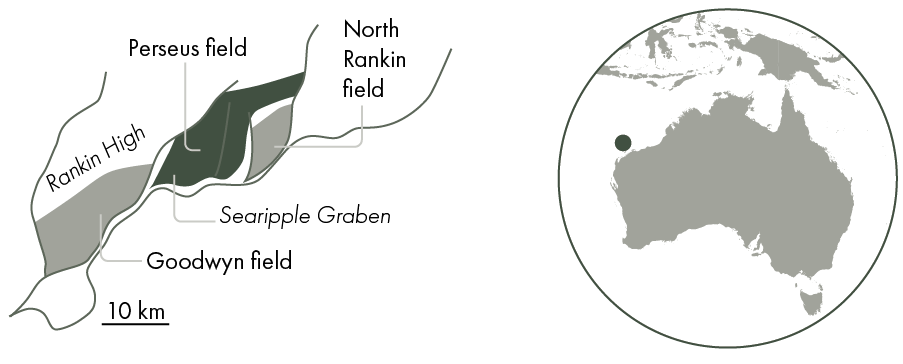
Years later, after the reprocessing of 3D seismic data across the North Rankin field in 1989, the North Rankin-4 discovery re-surfaced as an opportunity after amplitude studies and geological modelling had suggested that reservoir quality could actually be better than initially foreseen. It led to the mapping of a small prospect around the North Rankin-4 well, which was subsequently drilled by a step-out well from the North Rankin A platform – NDR-22. At the time, because this prospect was regarded as just a satellite of the North Rankin field itself, the prospect was given the prosaic name North Rankin West.
As the modelling results had already suggested, the NRA-22 well, drilled in 1991, found an excellent Bathonian reservoir. And even better, a 144 m gas column without even encountering the gas water contact. It led to a total reserve estimate of 0.62 Tcf.
What an intern can do
Well NRA-22 was put on production through the North Rankin facility soon after completion. Again, it took some time before people started realizing that there was something special going on. It took an intern or graduate who was tasked to analyse the NRA-22 production profile to find out that the depletion of reservoir pressure progressed at a much slower rate than initially foreseen. Only then the North Rankin team woke up and concluded that the connected volume around the well should be much larger than anticipated and a plan to drill more wells on the field was soon put together.
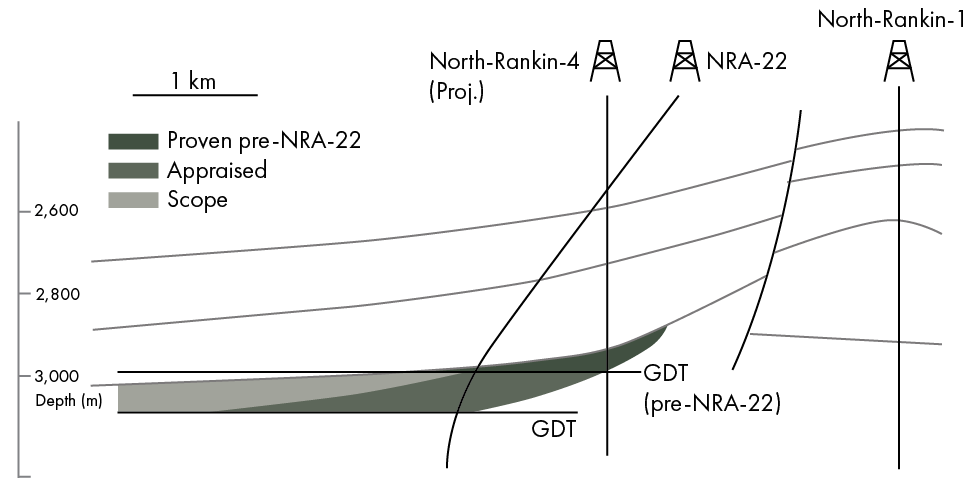
The drilling of Perseus-1 then showed that the gas resource within the Searipple Graben was much larger than the initial estimate based on the NRA-22 well. A few more appraisal wells were drilled after Persues-1 to further narrow down volumes. It is not a surprise that multiple wells were required to do that; it only needs inspection of the cross-sections and maps shown here to see that there is a complex trapping mechanism involved in holding a gas accumulation in this setting. After all, would you have chosen to drill in the Searipple Graben when looking at the cross-section without any prior well information?
To round up the story for now, after drilling of the appraisal wells on Perseus, a single contact was established. Although some stratigraphic compartmentalization was observed, juxtaposition of different strata through faulting meant that the field turned out to be well connected throughout. A remapping exercise in 1996 thus resulted in a ten-fold increase in booked reserves to a whopping 6.48 Tcf (183 Bcm). It formed an important motivation to significantly extend the Northwest Shelf LNG project at the time.
Why Perseus?
The Woodside team chose the name Perseus because in Greek mythology it was Perseus who killed Gorgon. At the time, the discovery of Perseus and the large additional proven volumes meant that the NW Shelf LNG project could expand, cancelling the business case for Chevron’s plans to build the Gorgon LNG terminal. In a revenge move, Chevron’s asset manager took a dive into Greek mythology to find out who killed Perseus. It happened to be Chrysaor, which then became the name of Chevron’s next find.


